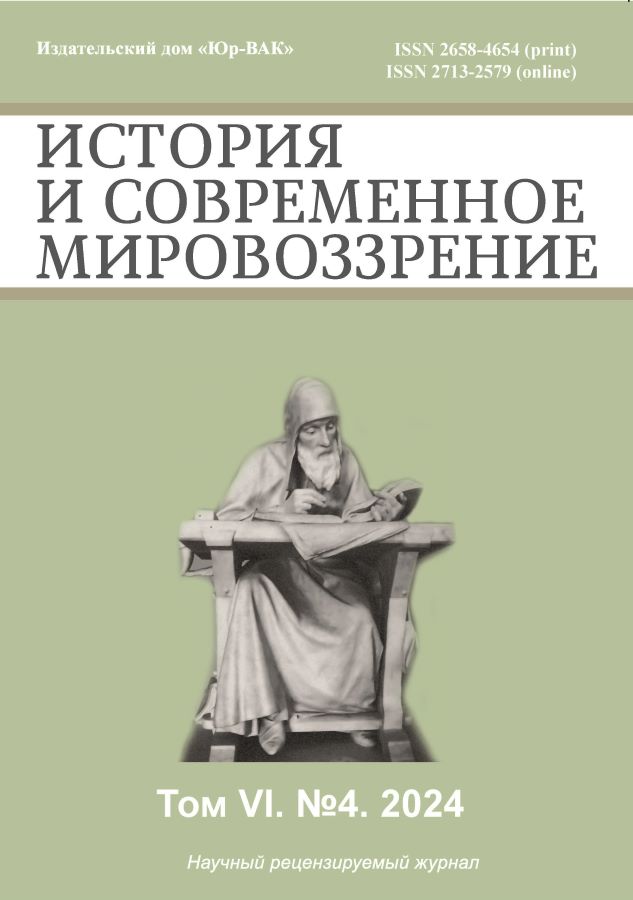Territorial structure of the Russian banking system (late 1980s — early 2020s) in the context of international historical experience
- 作者: Nikitin L.V.1,2
-
隶属关系:
- South Ural State Humanitarian Pedagogical University
- South Ural State University (NRU)
- 期: 卷 6, 编号 4 (2024)
- 页面: 54-63
- 栏目: ECONOMIC HISTORY
- URL: https://journals.eco-vector.com/2658-4654/article/view/650910
- DOI: https://doi.org/10.33693/2658-4654-2024-6-4-54-63
- EDN: https://elibrary.ru/EIQLTM
- ID: 650910
如何引用文章
详细
The article, based on statistical data and other information, is focused on the development of the geographical features of the Russian banking business from the initial market reforms of 1987–1988 to the present day. The above-mentioned issues are considered in the context of similar territorial shifts in the banking systems of a number of foreign countries. It is noted that soon after the start of reforms in Russia, there was an explosive growth in the number of banks. Accordingly, the number of cities in which banking headquarters were located increased at approximately the same rate. However, already from 1993–1995, competition mechanisms reversed these trends. A very similar change in trends was observed at the same time in a number of other post-Soviet republics and former Comecon countries that were making the transition to a market economy. However, in relatively small countries, during the 1990s and 2000s, there could be a complete return of banking management functions to national capital cities, while in Russia (where Moscow also has strengthened its leadership position) there are still dozens of cities with their own credit corporations. This geographic diversity and some other factors provide grounds for comparing Russia not with its neighbors in the former socialist camp, but with the United States. A new set of comparisons shows both the fundamental similarity of some trends and the sharp difference between the two countries in the role of the administrative-territorial factor.
全文:
作者简介
Leonid Nikitin
South Ural State Humanitarian Pedagogical University; South Ural State University (NRU)
编辑信件的主要联系方式.
Email: contlab2003@gmail.com
ORCID iD: 0000-0002-7404-8782
Scopus 作者 ID: 57210433574
Researcher ID: ABF-1076-2021
Dr. Sci. (Hist.), Associate Professor, Professor of the Department of World History, Associate Professor of the Department of International Relations, Political Science and Regional Studies
俄罗斯联邦, Chelyabinsk; Chelyabinsk参考
- Zotov M.S. I am a Banker: from Stalin to Putin. Moscow: RUSAKI, 2004. 472 p.
- Luzanov A.N. Geography of Banking. Moscow: MAKS Press, 2002. 252 p.
- Nikitin L.V. The Greater Wall Street: New York City and Other Banking Metropolises of the USA in the Late 20th and Early 21st Centuries. Chelyabinsk: SUSHPU Publ., 2019. 545 p.
- Nikitin L.V. Finding a Way in the Post-Industrial World: Traditional Industrial Centres of the USA and Russia in the National Banking Systems (1980s — 2010s) // Bulletin of the Udmurt University. Sociology. Political Science. International Relations. 2017. Vol. 1. No 3. P. 327–337.
- Salomatina S.A. Commercial Banks in Russia: Dynamics and Structure of Operations, 1864–1917. Moscow: ROSSPEN, 2004. 304 p.
- Salomatina S.A. Regional Financial Centers of the Russian Empire in the Second Half of the 19th Century and the Early 20th Century // Ural Historical Journal. 2024. No. 2 (83). P. 82–92.
- Feigin V.E. Geography of the Insurance Business in Russia: Changes for the Period of 2005–2023 // Russian Economic Internet Journal. 2024. No. 3.
- Cassis Y. Capitals of Capital. The Rise and Fall of International Financial Centres. 1780–2009. New York: Cambridge University Press, 2010. 408 p.
- Cassis Y., Wójcik D. (eds.) International Financial Centres after the Global Financial Crisis and Brexit, Oxford: Oxford University Press, 2018. 268 p.
- Grossman R.S. Unsettled Account: The Evolution of Banking in the Industrialized World since 1800. Princeton: Princeton University Press, 2010. 408 p.
- Ilić S. Socialist Banking: The Continuous Evolution of the Banking Sector in Yugoslavia (1944/45–1991/92) // Anali Pravnog fakulteta u Beogradu. 2022. Vol. 70. No. 1. P. 33–74.
- Jiang C., Yao S. Chinese Banking Reform: From the Pre-WTO Period to Financial Crisis and Beyond. London: Palgrave Macmillan, 2017. 331 p.
- LeBor A. Tower of Basel: The Shadowy History of the Secret Bank that Runs the World. New York: Public Affairs, 2013. 360 p.
- Sucháček J. The Changing Geography of Czech Banking // European Journal of Social Sciences. 2012. Vol. 28. No. 1. P. 79–91.
补充文件










